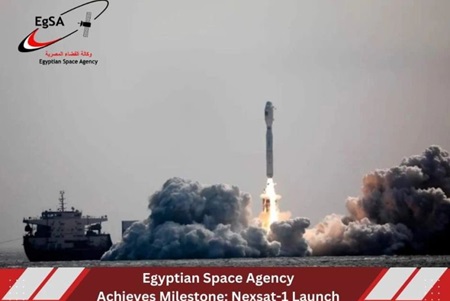
In a historic achievement for Egypt’s national space programme, the Egyptian Space Agency (EgSA) has launched its experimental satellite, Nexsat-1, utilising China’s small orbital launch vehicle, Jielong-3 (Smart Dragon-3), from the coast of Yangjiang City, Guangdong Province, People’s Republic of China, on February 3, 2024.
Nexsat-1, primarily designed for remote sensing, represents a collaborative effort between Egyptian engineers and Germany’s Berlin Space Technologies (BST). Throughout the satellite’s developmental phases, EgSA played a pivotal role, focusing on critical operating software and systems. Over 60 engineers were involved in functional tests, integration, assembly, and testing procedures.
Dr Sherif Sedky, CEO of EgSA, highlighted the significance of Nexsat-1 in advancing micro-satellite technology localisation in Egypt and Africa. Beyond project oversight, EgSA actively contributed to designing satellite missions, outlining technical descriptions for various subsystems, and establishing collaborative frameworks with the German team. Additionally, they developed a complete Egyptian version of the satellite’s software and managed the intricate assembly, integration, and testing (AIT) processes, showcasing EgSA’s end-to-end capabilities in satellite development.
EgSA also coordinated the entire launch process and established a control station in Egypt for seamless communication with the satellite and retrieval of relevant data. Weighing 67 kg, Nexsat-1 is categorised as a microsatellite and features a space payload for electro-optical imaging, offering a multispectral resolution of 5.7 meters for high-detail imagery.
The significance of Nexsat-1’s launch lies in the localisation of design technology and software for microsatellites, setting the stage for future manufacturing. This achievement aligns with the state’s sustainable development goals and holds economic promise by serving as a model for other entities.
Notably, Nexsat-1 marks Africa’s first satellite launch for the year, contributing to the continent’s total number of satellites, which now stands at 59.












Add Comment